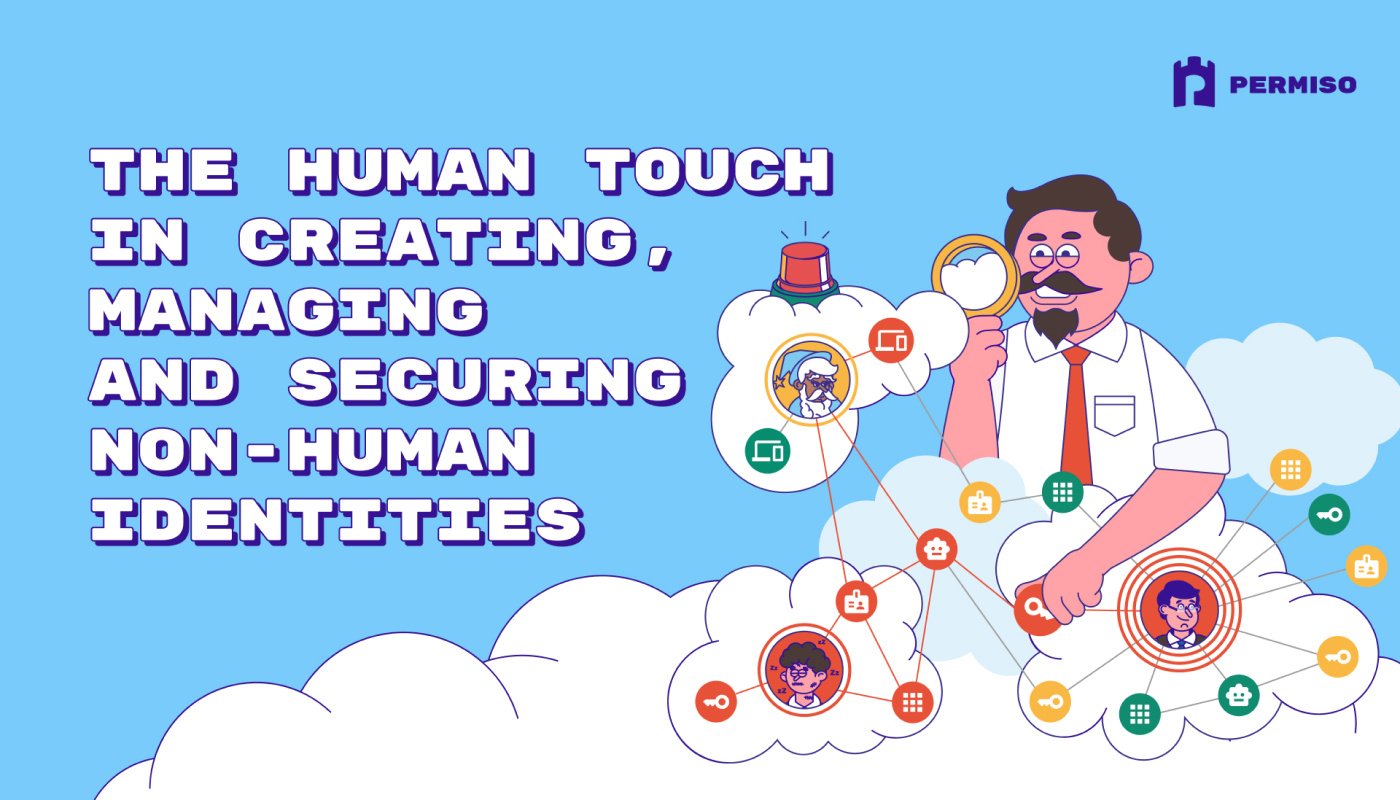
Permiso Recognized as a Challenger and Fast Mover in GigaOm’s Identity Security Posture Management (ISPM) Radar Report

Hear Ye, Hear Ye
Subscribe to Cloud Chronicles for the latest in cloud security!
Identity is no longer just an IT concern. It has become the control plane for how organizations operate in the cloud, and attackers know it. As enterprises accelerate adoption of multi-cloud infrastructure and SaaS applications, the number of identities, both human and non-human, has surged beyond what traditional security tools can manage. Service accounts, machine identities, API keys, contractors, and partners are all part of the picture, and each represents a potential doorway for attackers.
Managing, securing, and monitoring this identity sprawl has become one of the greatest challenges facing modern security teams. Research repeatedly shows that the majority of breaches involve compromised identities in some form. The question is no longer if attackers will exploit identity, but how fast they can do it once a weakness is found.
Independent research firms are also recognizing this shift. In July 2025, GigaOm released its latest Radar for Identity Security Posture Management (ISPM),
a framework designed to evaluate how vendors help organizations gain visibility into their identity environment and reduce risk. Permiso was recognized in this report as both a Challenger and a Fast Mover.
While recognition is encouraging, it is even more important to reflect on what this placement says about the evolving identity landscape and how security teams can prepare for what is coming next.
Why Challenger and Fast Mover Matters
The GigaOm ISPM Radar is not simply a directory of solutions. It evaluates how technologies balance platform maturity with innovation, and how quickly vendors are adapting to new challenges.
For Permiso, two designations stood out:
- Challenger: This indicates a vendor is questioning established methods and offering differentiated ways to solve persistent problems such as shadow identities, excessive permissions, and weak MFA enforcement. Challengers reshape the conversation by showing that older approaches are no longer sufficient.
- Fast Mover: This highlights agility and speed of execution. In an environment where attackers constantly shift tactics, adaptability is essential. Being seen as a Fast Mover reflects the ability to innovate quickly and bring new capabilities to market at the pace defenders need.
Together, these designations validate the work Permiso has been doing with customers: giving them visibility into identities they did not know they had, detecting risks before attackers exploit them, and responding to identity-based threats in real time.
Why ISPM Matters Now
The rise of Identity Security Posture Management is not accidental. Several forces are converging to make ISPM a boardroom-level priority:
- Explosive growth of non-human identities
In many enterprises, non-human identities outnumber human identities by a factor of 50 to 1. Service accounts, bots, and API keys often slip through the cracks of traditional IAM governance, leaving attackers with easy entry points. - Misconfigurations and over-permissions
A single misconfigured identity, an unused admin account, an API key without expiration, or a user without properly enforced MFA, can create an open path to critical systems. Posture management is essential to continuously identify and fix these weak spots. - Regulatory and compliance pressure
Frameworks such as NIST, CIS, and ISO increasingly highlight identity as a cornerstone of cloud security. Auditors are asking tougher questions about how organizations are managing both human and non-human identities. - Shift from prevention to resilience
Security leaders now recognize that identity compromise cannot be prevented 100 percent of the time. The priority has shifted to resilience - finding exposure early, detecting abnormal behavior, and reducing blast radius when an identity is abused.
These realities explain why analysts are focusing more attention on ISPM and why vendors like Permiso are being recognized for innovation.
What the Market is Demanding
From ongoing conversations with CISOs and security teams, three recurring themes emerge:
- Visibility across all identities
It is no longer enough to monitor only employees and contractors. Machine identities, service accounts, and API keys pose equal, if not greater, risk. Organizations want a complete inventory of every identity and entitlement across their environment. - Real-world detection capabilities
Posture assessments provide a static view, but they must be paired with runtime signals to catch attacks in progress. Security teams are asking for solutions that bridge posture with live detection, enabling them to respond faster. - Actionable context, not just alerts
Teams are drowning in data. What they need is context: which identities are most at risk, what attack paths exist, and what the blast radius could be if those identities are compromised. Without this, prioritization is impossible.
How Permiso is Addressing This Gap
The Permiso Identity Security Platform is designed to tackle identity risk from both posture and detection perspectives. Some of the ways we do this include:
-> Universal Identity Graph: Mapping human and non-human identities, groups, and entitlements across providers to visualize relationships, highlight potential attack paths, and reduce exposure before incidents occur.-> Detection at scale: Leveraging over 1,500 detection signals developed from real-world adversary behavior, the platform identifies risks such as impossible travel, unauthorized access, and credential exposure.
-> Deep integrations: Enriching SIEM and XDR platforms with identity intelligence while natively integrating with services like AWS GuardDuty and Microsoft Defender to fit seamlessly into existing workflows.
-> AI-driven analytics: Using anomaly detection to generate posture recommendations that adapt as attack techniques evolve, helping teams detect issues before small misconfigurations become major breaches.
Looking Beyond Recognition
While recognition in the GigaOm Radar is a milestone, it is not the finish line. The identity landscape continues to evolve, and with it, the requirements for ISPM.
We see three major areas shaping the next phase:
- Context-rich detection
The future lies in bringing together posture, behavior, and relationships to generate a richer picture of identity risk. Static checks alone are not enough. - Behavioral analytics powered by AI
As attackers automate and scale their tactics, defenders will need machine-assisted detection that learns from subtle patterns and adapts to new behaviors faster than human teams can. - Tighter ecosystem integrations
Identity risk cannot be addressed in isolation. ISPM solutions will need to integrate seamlessly with SIEM, XDR, SOAR, and compliance tools to ensure insights turn into action.
At Permiso, we are already working in these areas, including development of a Universal Identity Risk Score that combines posture, behavior, and blast radius into one comprehensive view.
Key Takeaways for CISOs
- Identity is the new attack surface: Non-human identities are growing faster than human identities, and each one carries risk.
- Recognition signals momentum: GigaOm’s placement of Permiso as a Challenger and Fast Mover underscores that innovative approaches to ISPM are gaining traction.
- Visibility + detection = resilience: ISPM cannot be static. Combining posture with real-time detection is the only way to get ahead of identity-based threats.
- The future is context-driven: Blast radius, behavioral analytics, and integration with broader security stacks will define the next generation of ISPM platforms.
Final Thoughts
Being named a Challenger and Fast Mover in the GigaOm ISPM Radar validates the approach we have taken, but what excites us more is the opportunity ahead. Identity security is moving into a new era one where posture, detection, and context must work together.
At Permiso, we are committed to building the platform that delivers all three, giving defenders the clarity they need to protect what matters most.
If you want to see how Permiso can help reduce identity risk and defend against evolving threats, you can explore our solutions page



.png)




